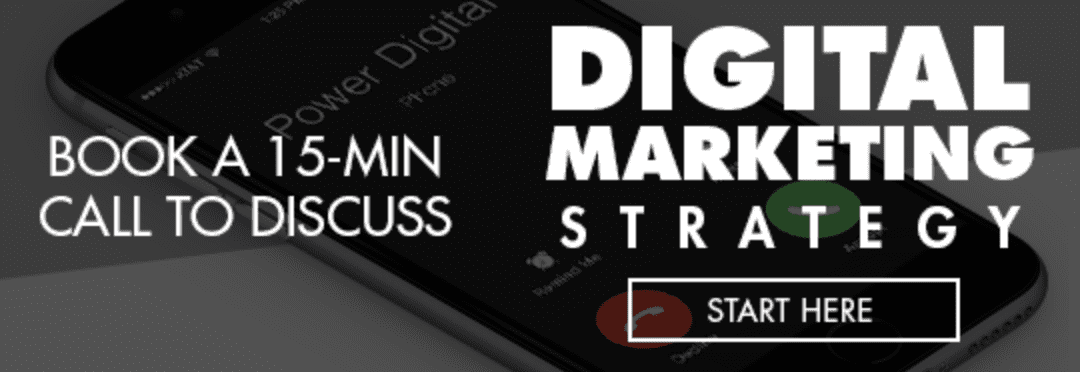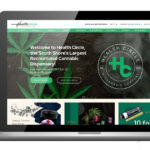With the widespread use of the internet, it is only natural that it merely became another avenue to exchange goods. And it was only a matter of time until someone began to study the patterns of consumption and traffic. Here we are today with access to customer insights. This information alone is not particularly transformative, but rather the real power of customer insights comes in how you use the insights across your various marketing channels.
One channel in which this is directly applicable is your paid advertising. Equipped with these tools, you will still need to strategize to implement them to the best of their ability. Used correctly, customer insights prove to be worth the time and money. Below we’ll cover easy tips that will enable you to use customer insights in paid campaigns to maximize profitability.
Identify Your Target Before You Aim
Marketing requires constant orientation around the targeted customer. Thus, you are more likely to find success if you have a product or service that appeals to specific personas than if you attempt to appeal to every type of consumer. So, before your customer insights are of any value to you, you must realize that they consist of more than numbers.
Draw meaning from customer insights by observing responses to questions such as:
- Where do they live?
- How old are they?
- What is their occupation?
- What are their goals?
- What device do they use?
- What are their spending habits?
With clearly defined and processed data, you’re able to construct customer personas. This crucial step establishes the foundation of the marketing tactics that will be most useful to target your intended consumer. From here, you can proceed to structure and build your paid campaigns.
Scheduling and Frequency
Applying your customer insights, slate your ads at the times where a majority of users are searching for your business. You can also adjust the schedule to correlate to whenever there are spikes in searches. Moreover, you can invest more in your campaign into boosting your advertisements at these peak periods to generate the optimum amount of traffic.
Seasonal Set-Ups
Based on the same principle as above, if your good or service is especially relevant or in-demand near a certain holiday, season, or event, then consider redirecting your resources leading up to that timeframe. Save money, on the other hand, if you’re not closely affiliated to a special occasion until the bid price drops.
Negative on Negative Words
Another money-saving tip: don’t use negative keywords, meaning words that don’t correspond to your business. If your salon doesn’t offer hair-removal services, then don’t bother allocating funds towards attracting traffic that you are unable to assist.
Determine Messaging for Your Defined Audience Personas
Tailoring messages to fit your developed persona’s goals, desires, and pain points is proven effective. 52% of consumers say they are likely to select another brand if they don’t feel like communication has been personalized. Using specific messaging will help you reach your audience with material that strongly resonates with them. Examples include success-based, fear-based, and empathy-based messaging.
Success-based Messaging
The average person feels compelled to achieve, succeed, or improve. The very human tendency is reflected in the upwardly rising $9.9 billion dollar market for products that are considered a part of the self-improvement industry, which encompasses self-help, self-esteem, mental and physical health. Therefore, the decision to appeal to success-based messaging tends to be one of the more prevalent used by those in the business of marketing.
In a culture that has placed increasing importance on celebrity influence, celebrity-endorsed products or services essentially sells the idea that anyone who purchases said good can become like or equal to them.
Wheaties is a famous and enduring illustration. “Breakfast of Champions” encouraged fans to consume the cereal, and, in doing so, implied that an ordinary person could also be or become a champion.
Fear-based Messaging
On the other end of the spectrum, every sentient being feels fear. Using fear-based messaging in your paid campaign, based on its name, may seem villainous. Yet, your objective is to provide a solution to the fear you initially present, as opposed to merely engendering fear or concern. And, according to the prospect theory, people are more averse to losing than they enjoy equivalent gains. This demonstrates that consumers are more likely to purchase a product or service as a preventative measure than they are to take a risk for potential profit.
For example, your insights reveal your audience is predominantly homeowners that live in the midwest. Then, you can use tornado hazards to prompt them to purchase insurance, preventing potential financial loss. Or, to point to a well-known company, Fedex’s “Absolutely, Positively Overnight” slogan plays into the anxiety that a package won’t arrive in time.
However, take care not to overdo it. Fear-based messaging shouldn’t be your only strategy.
Empathy-based Messaging
Arguably the most favorable form of messaging, it, somewhat obviously, appeals to the empathy of consumers. By crafting meaningful campaigns that resonate and are impactful, the brand is more likely to build a positive relationship with their clientele. Gone are the days where meaningless or non-stimulating advertisements will be willfully consumed. More than ever, people are drawn to what will move their emotions and, resultantly, call them to action.
You’ve seen this already in advertisements that use associations with motherhood or childhood, which most can relate through a personal memory. Simple as that and a bond can develop between the brand and the buyer. For this reason, companies strive to employ common experiences in new ways, so that viewers can find a thread of commonality to tie them to the business.
Which Emotion is the Most Effective?
The forms of emotion-based messaging detailed above are just some of the possible approaches. Although the precise number is debatable with different sources proclaiming another, according to Paul Ekman, there are six basic emotions.
- Happiness
- Sadness
- Surprise
- Anger
- Disgust
- Fear
To begin with or to simplify your approach, you may centralize your campaign around the six basic emotions. But as any individual in marketing or even as a fellow human being, we have an intuitive understanding of which feelings stimulate reactions, why they do, and how they do. Incorporate this methodology with customer insights to make the most out of your paid campaigns.
While you may feel one particular messaging style is easier, you should create ad copy that fits in each of the styles of messaging. Doing so can broaden your scope and help you discover which your customers prefer.
Conducting A/B Testing
Once you’ve secured several ad copy variations, start testing them against one another to see which performs best. To preserve your resources, use the copy that will land you the most profitable prospective client for your dollar—a practice referred to as A/B testing.
What is A/B Testing?
It’s the act of comparing the performance of two versions of a single marketing element. Once you have your options, both will be randomly presented to half of the viewers each. The test results will give you an idea of which to select based on the number of users that interacted with A versus B.
Not restricted to testing ad copy, A/B testing can reveal which design element is the most pleasing. Sequential tests may be run to tailor the ad or call-to-action in order to encourage the highest amount of clicks. Additionally, it can be used not solely on your website or ads but even in marketing emails.
Before you make adjustments according to A/B test results, avoid these frequent errors:
- Don’t be impatient – Give your test time to show reliable results. By forming hypotheses on the data immediately, you may draw inaccurate conclusions. Without a sufficient trial period, your data could be inconsistent and not representative of your average user.
- Know what you’re looking for beforehand – Although you may be tempted by all the metrics that are available, you should establish what you are seeking prior to running the test. There is such a thing as having too much information. Avoid drawing unsupported conclusions from unrelated variables by running one test at a time.
- Run the test more than once – Regardless of whether your findings seem to support one inference overwhelmingly, there is always a possibility of error. The more accurate, thorough, and complete the data is, the better results you’ll yield.
How to Use What You’ve Learned?
The next logical step is to take the results from your testing and use it for future improvements. What you learned in one test may apply to other elements of your website. If you already have the means, then make the most of it by continuing to optimize your content.
When you take the time to make customers feel engaged and fulfilled, they are more likely to return and even spread the good word. Just as the digital landscape continually evolves, so does society—your buyers.
Adaptation!
As a result, you must continue to adapt and address their needs to thrive among the competition. Regularly analyzing, adjusting, and improving will stimulate even more leads and conversion rates. Keep these pointers in mind, and your paid campaigns will pay for themselves.
Sources:
Behavioral Economics. Prospect Theory. https://www.behavioraleconomics.com/resources/mini-encyclopedia-of-be/prospect-theory/
Harvard Business Review. A Refresher on A/B Testing. https://hbr.org/2017/06/a-refresher-on-ab-testing
Psychology. What are Basic Emotions? https://www.psychologytoday.com/us/blog/hide-and-seek/201601/what-are-basic-emotions
Search Engine Land. 10 Tips for a More Effective Paid Search Campaign. https://searchengineland.com/10-tips-for-a-more-effective-paid-search-campaign-13543
The post How to Deploy Customer Insights in Paid Campaigns? appeared first on Power Digital.
Article From: "Jillian Frager" Read full article
 SERPCOM is a full-service Boston digital marketing agency focused on improving online visibility, increasing traffic, raising revenue and providing SEO services.
SERPCOM is a full-service Boston digital marketing agency focused on improving online visibility, increasing traffic, raising revenue and providing SEO services.
SEO-first: A fundamentally better approach to online marketing.
Digital Marketing | SEO | Web Design & Development | Search Engine Marketing

SERPCOM is a full-service Boston digital marketing agency focused on improving online visibility, increasing traffic, raising revenue and providing SEO services. SEO-first: A fundamentally better approach to online marketing.
Digital Marketing | SEO | Web Design & Development | Search Engine Marketing
SERPCOM is a full-service Boston marketing agency focused on improving online visibility, increasing traffic, raising revenue and providing SEO services for leading brands.
Maximize the value of your website and turbo charge your online marketing efforts with SERPCOM. Call or click the button and start making the web work for you.
Just click on the Phone Number to dial on your phone:





